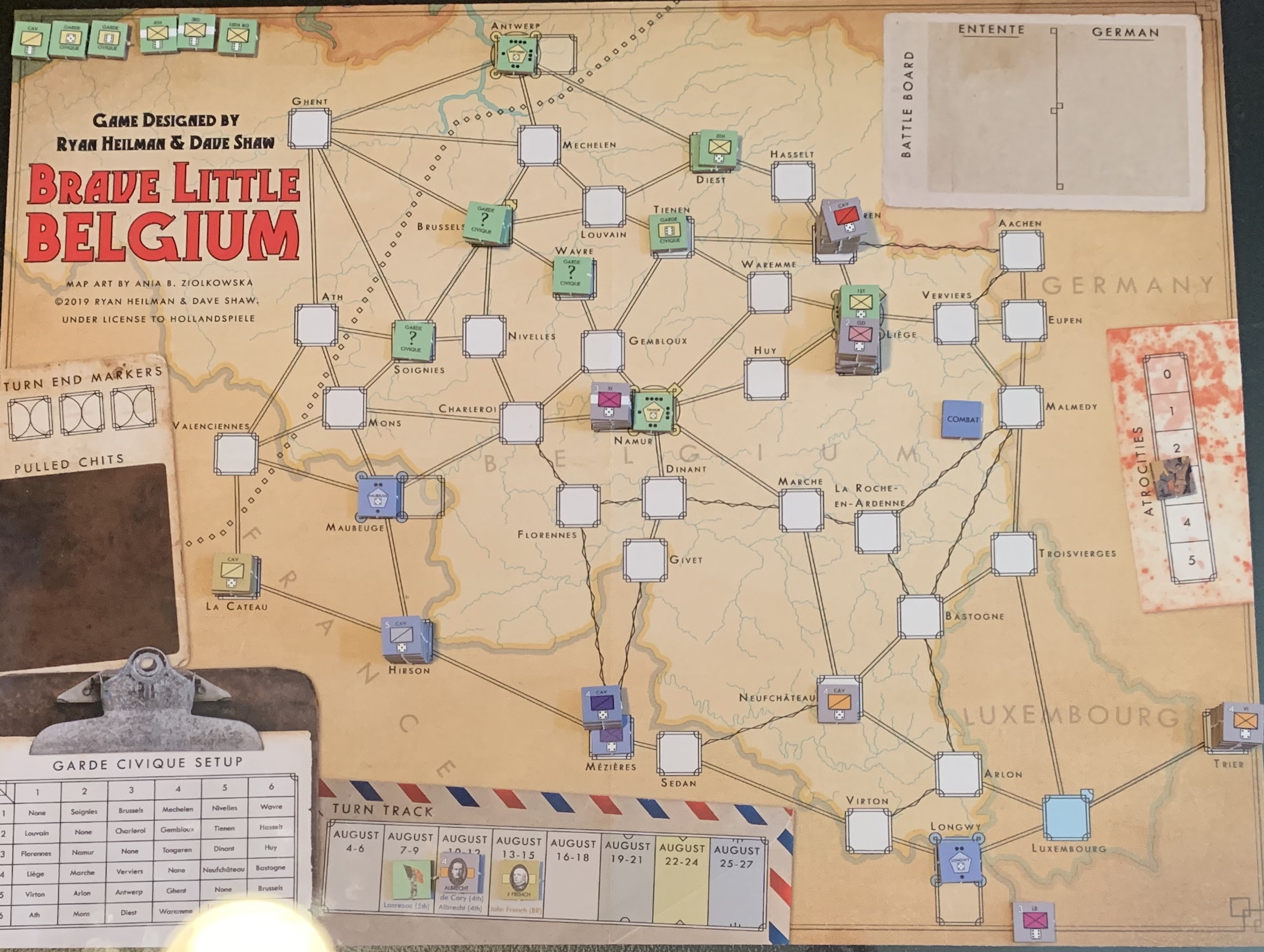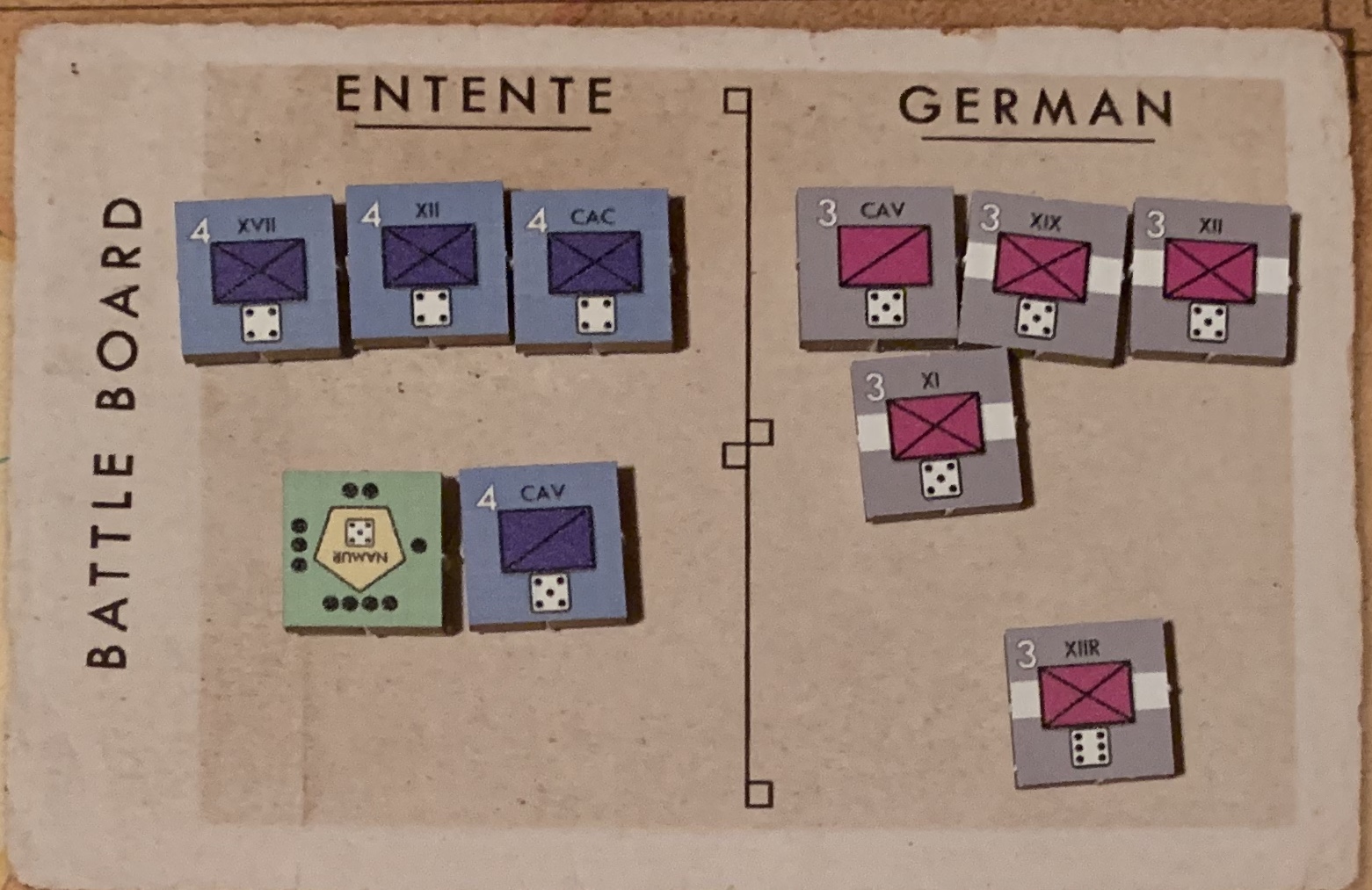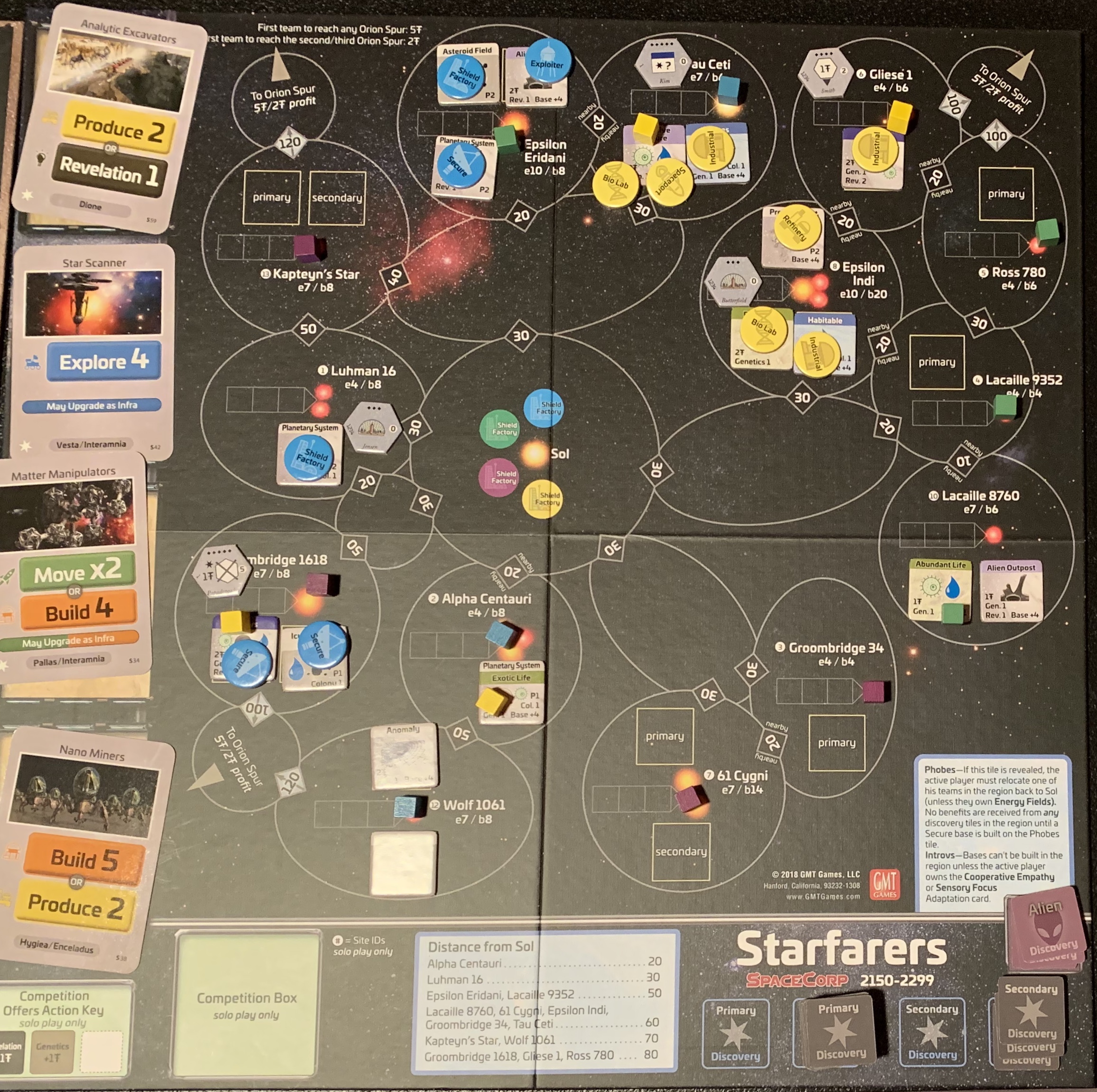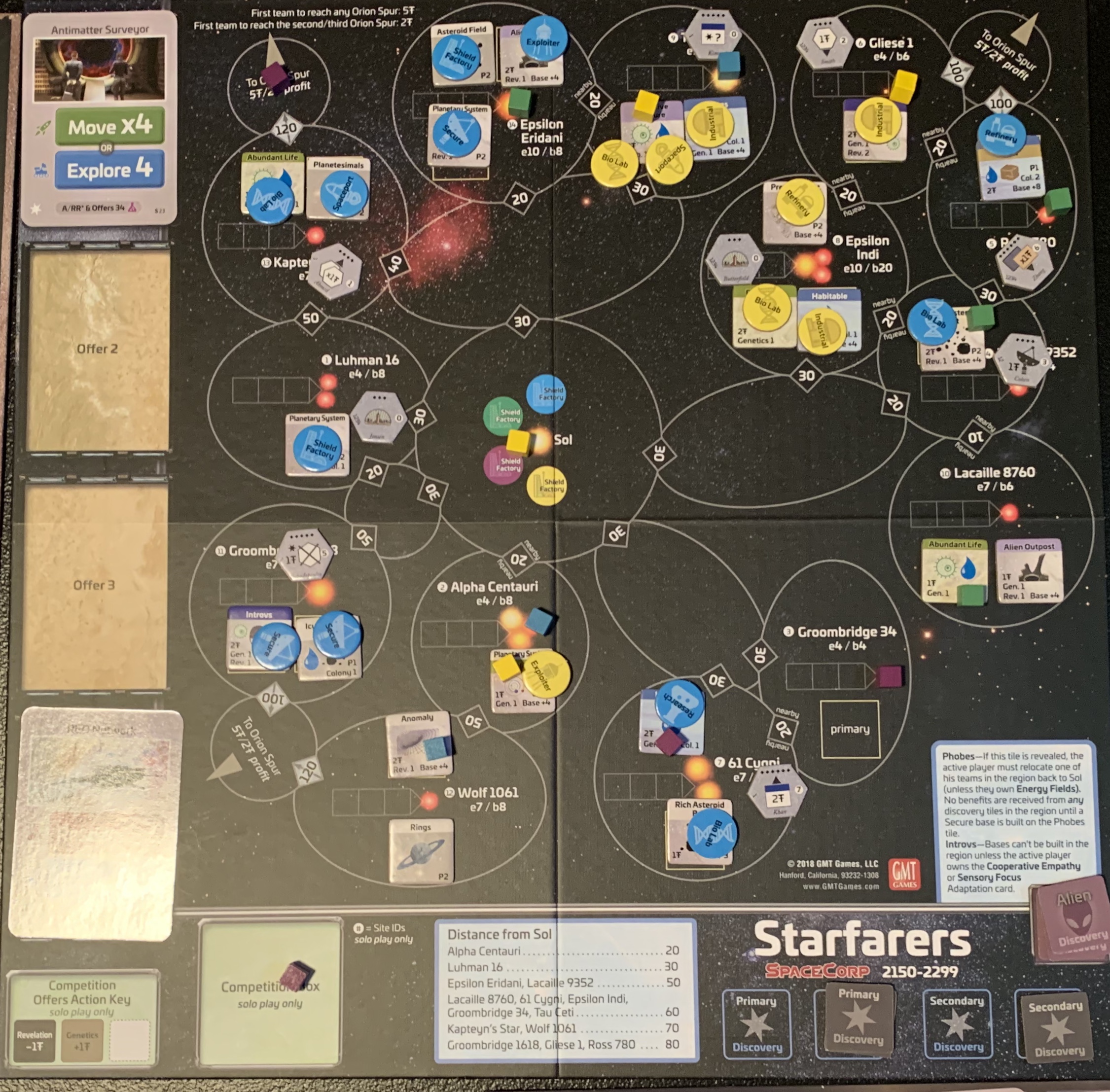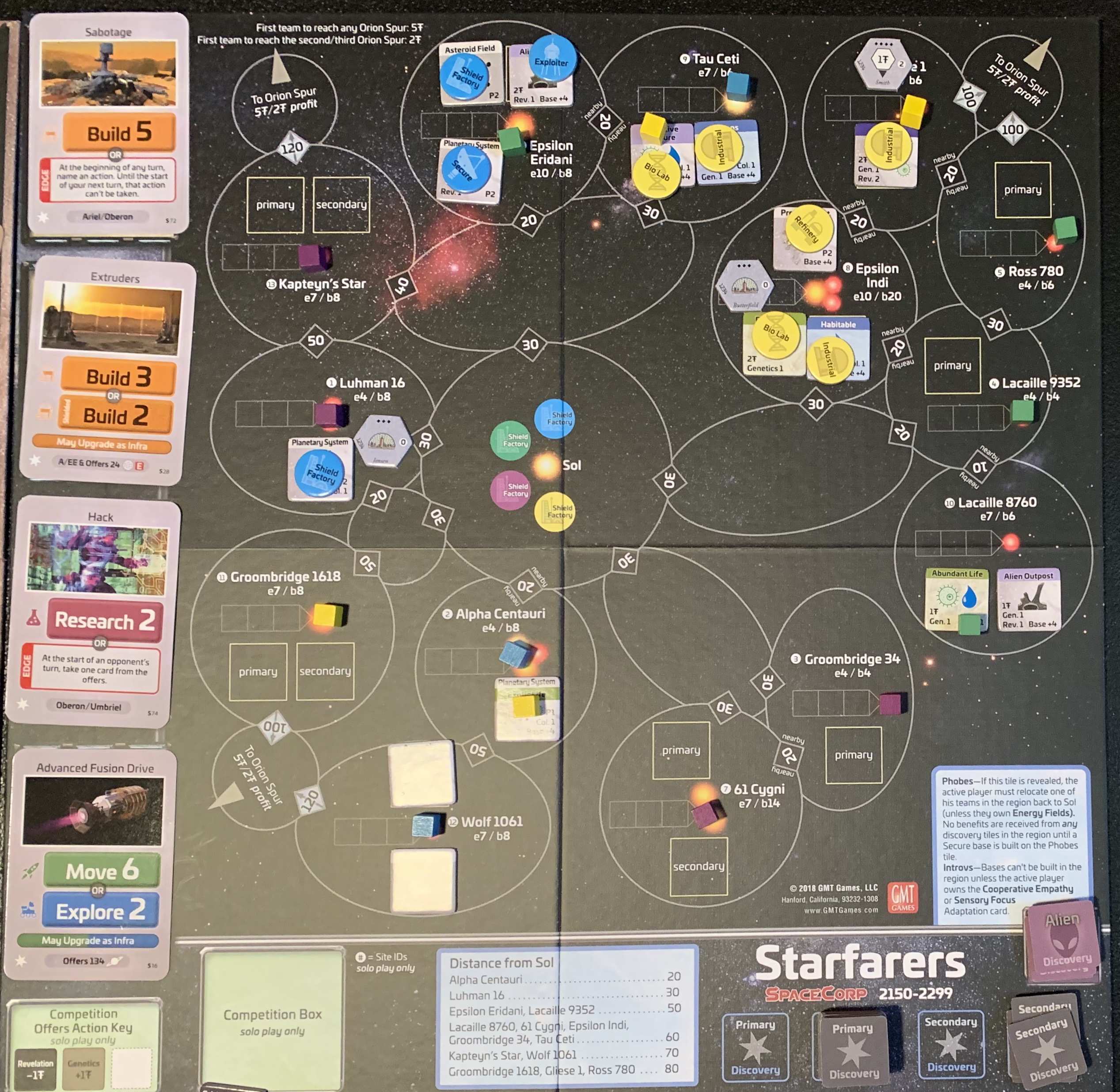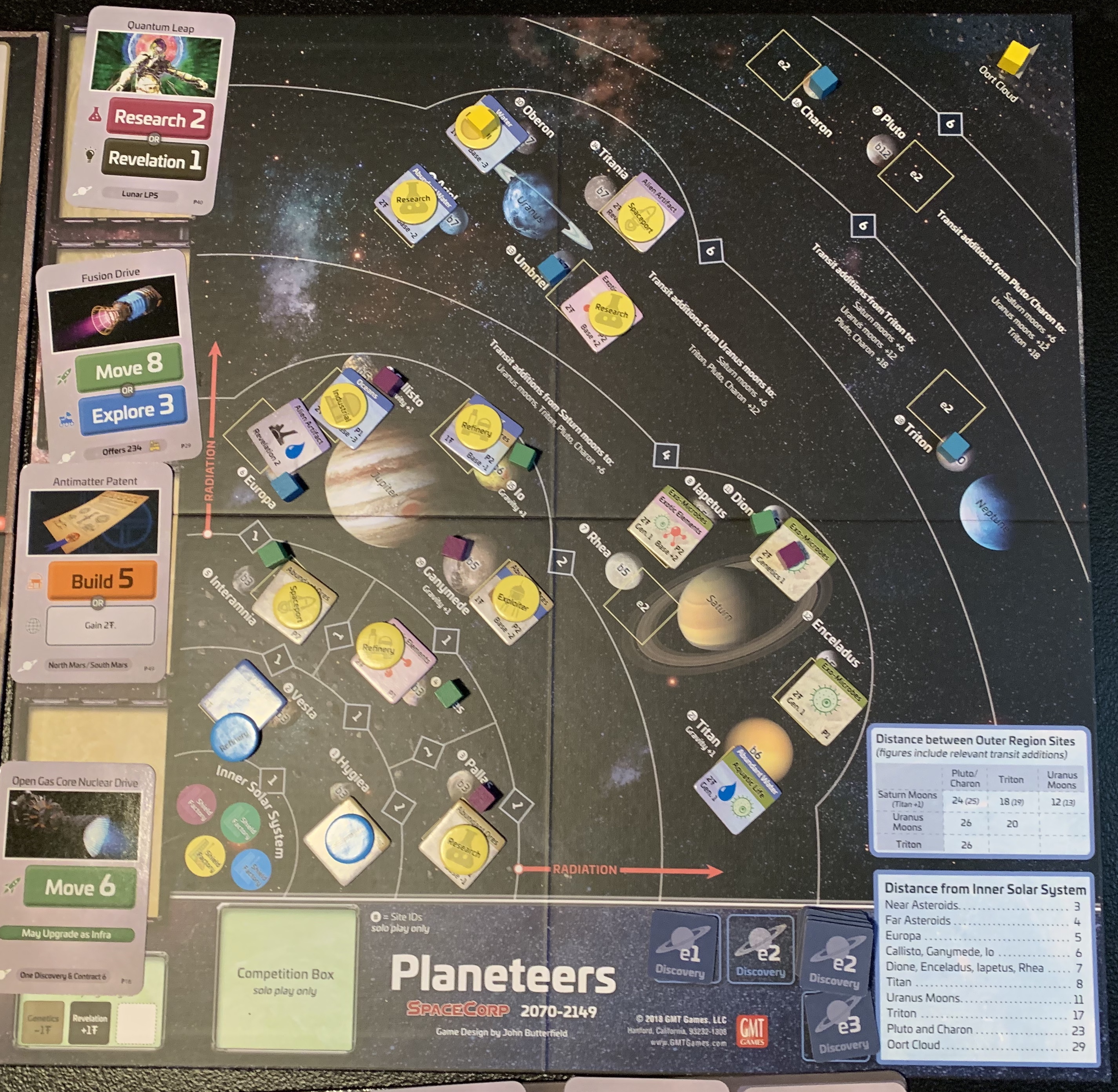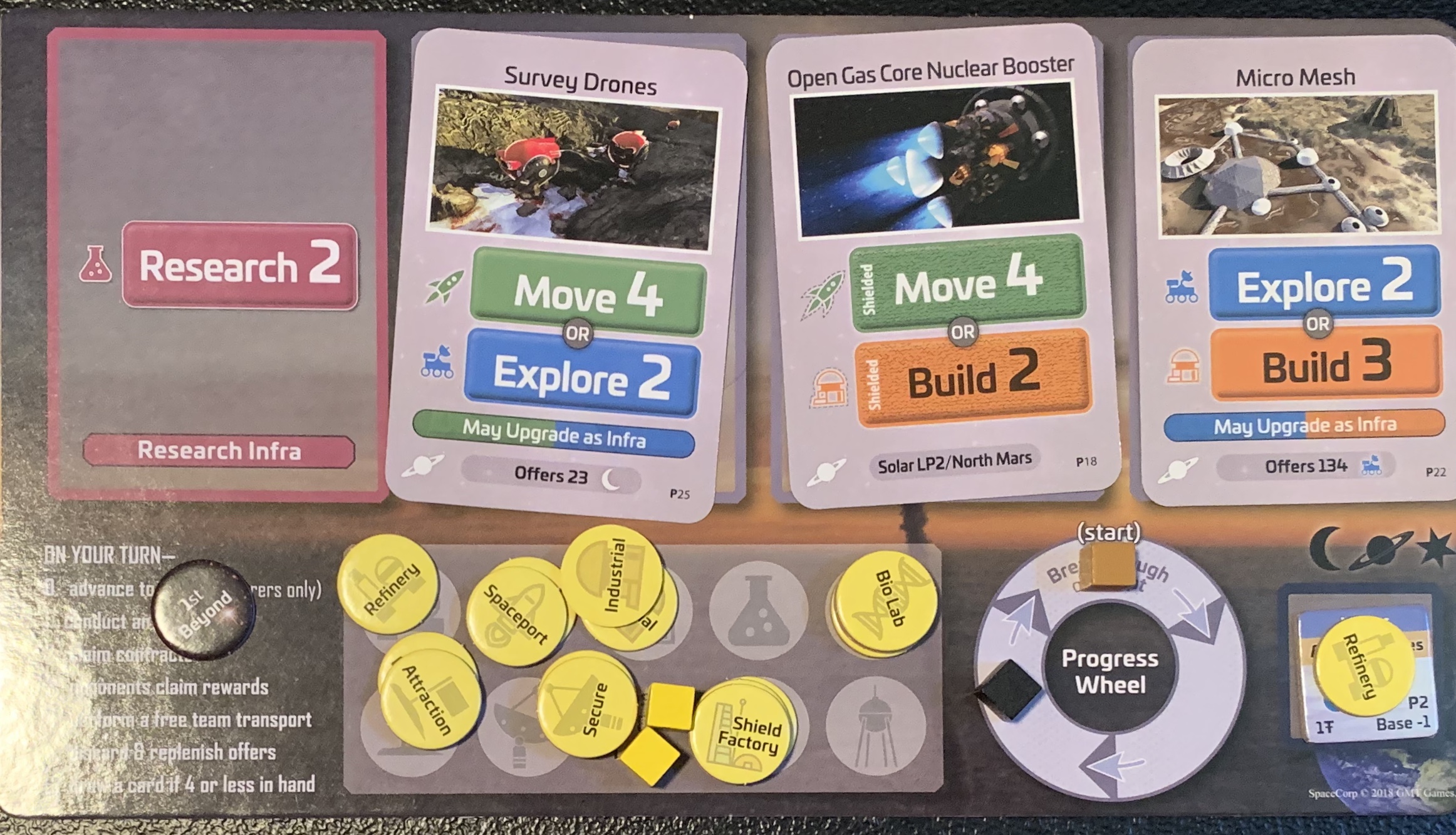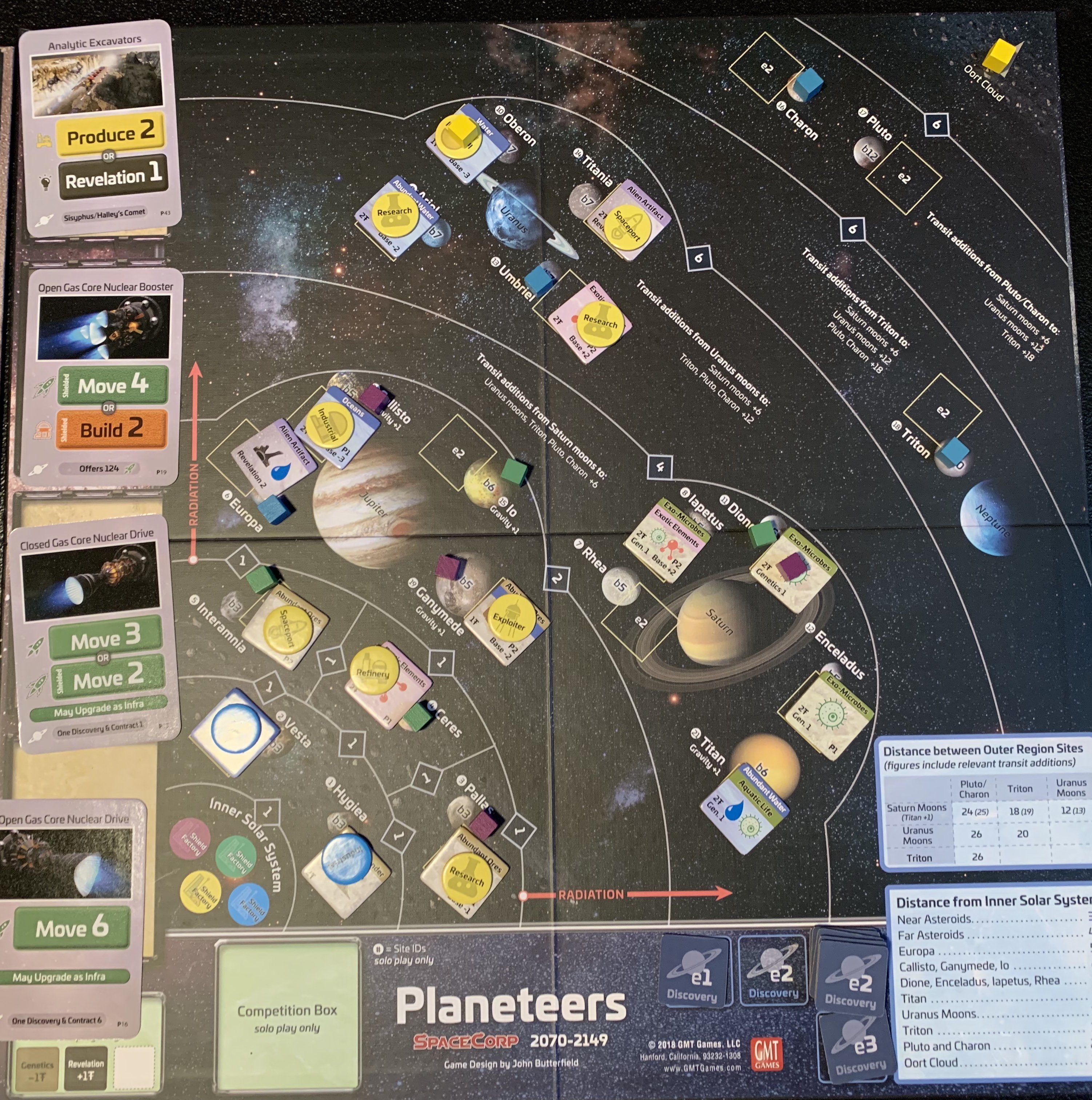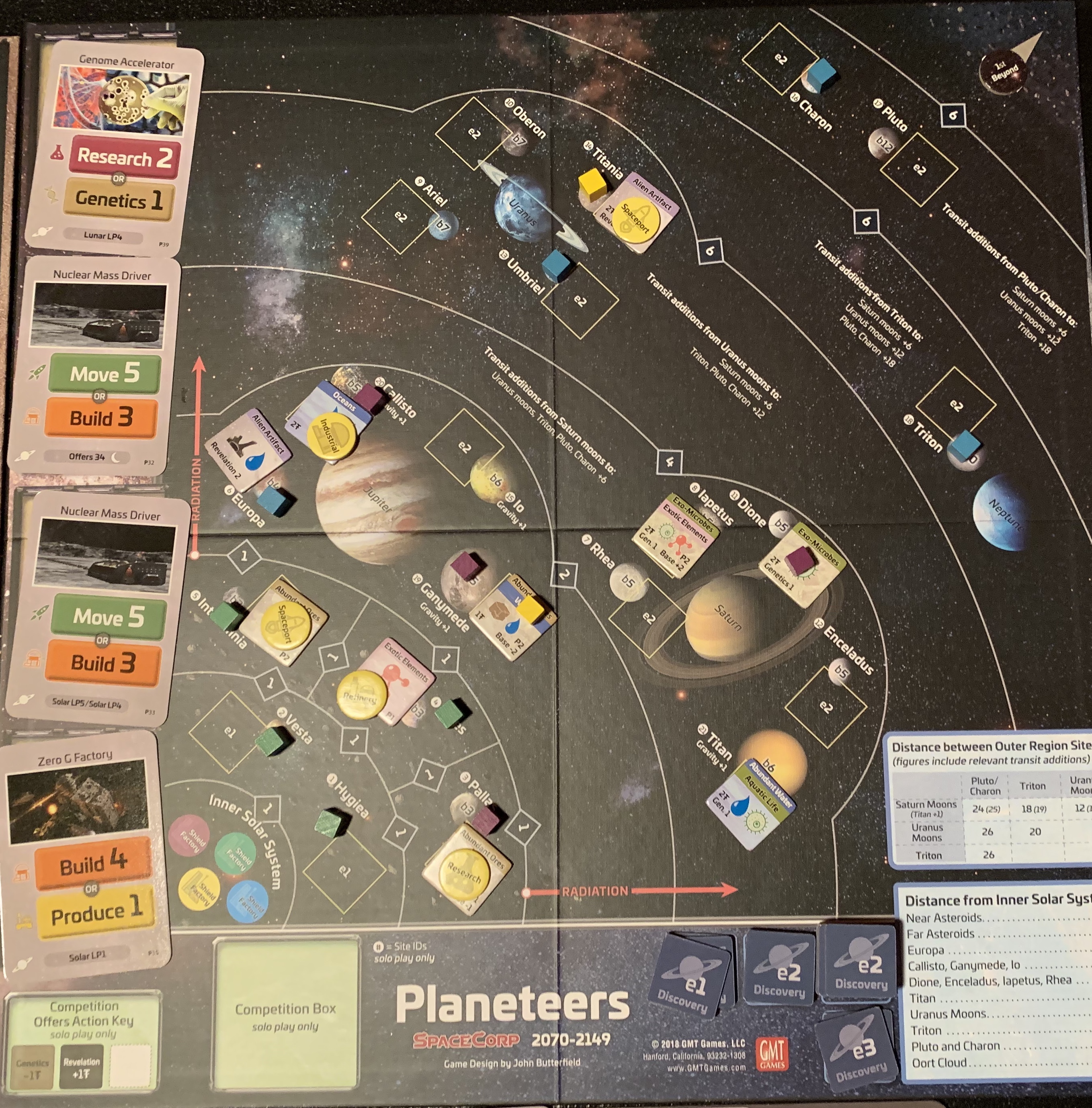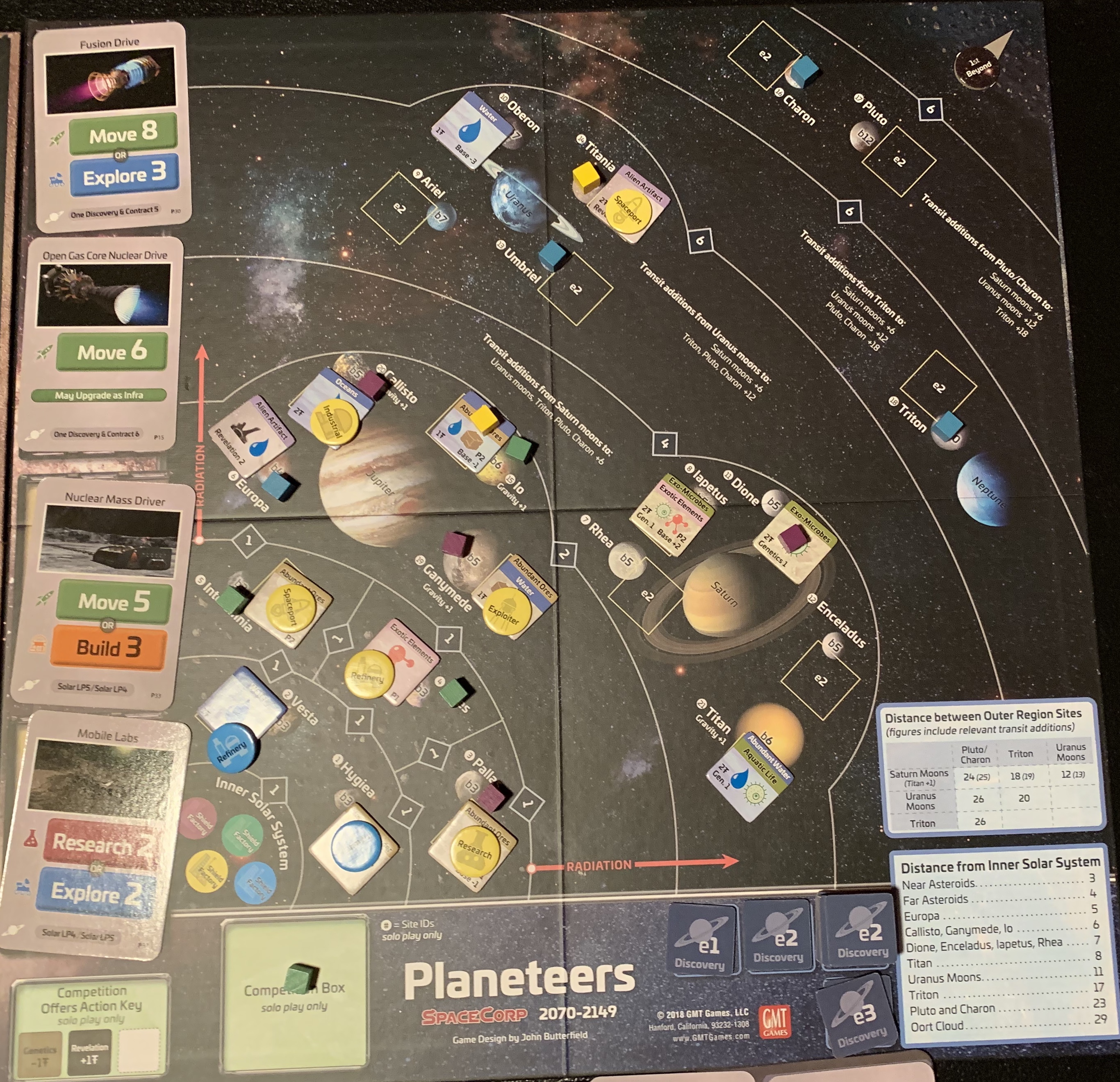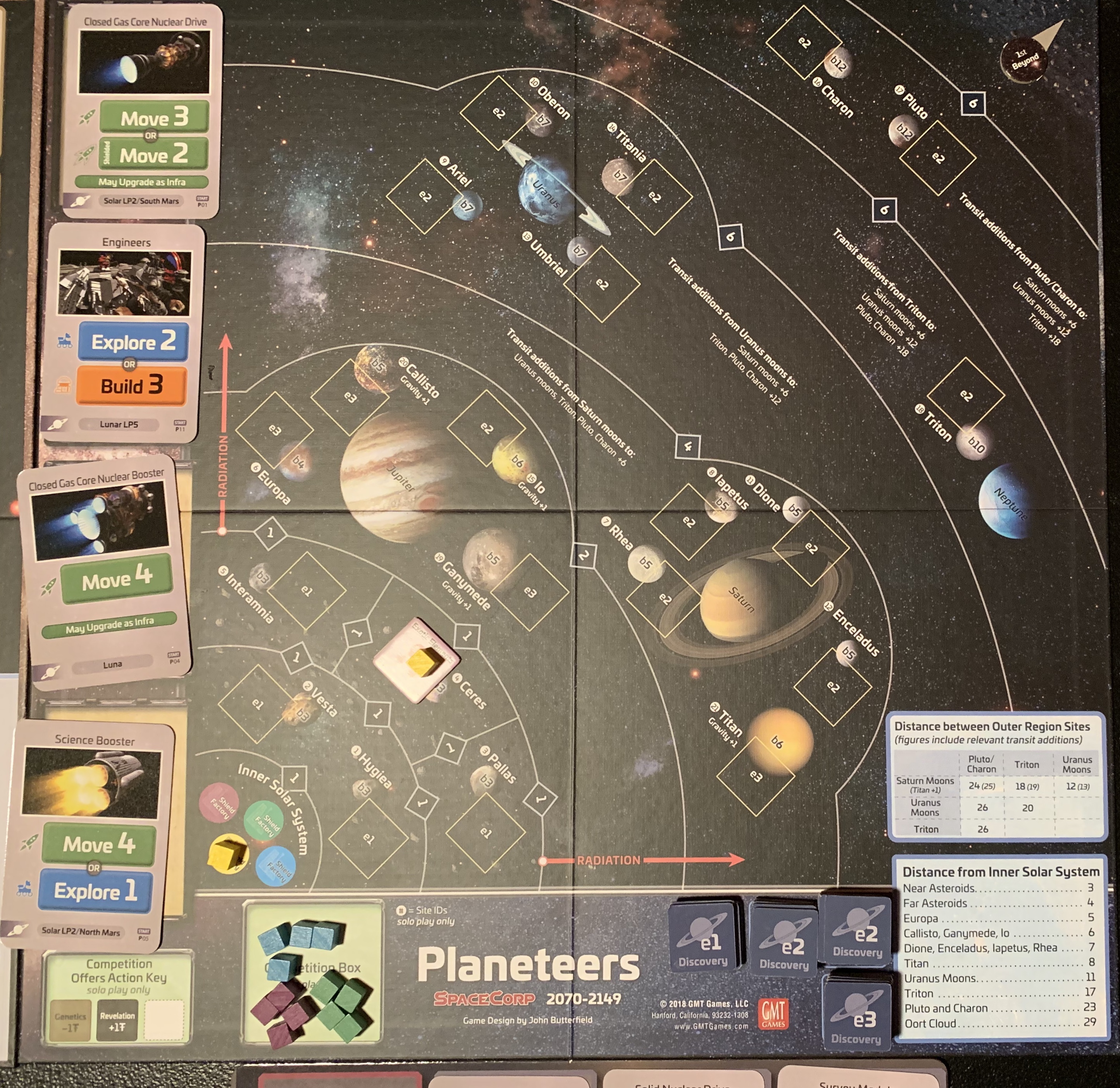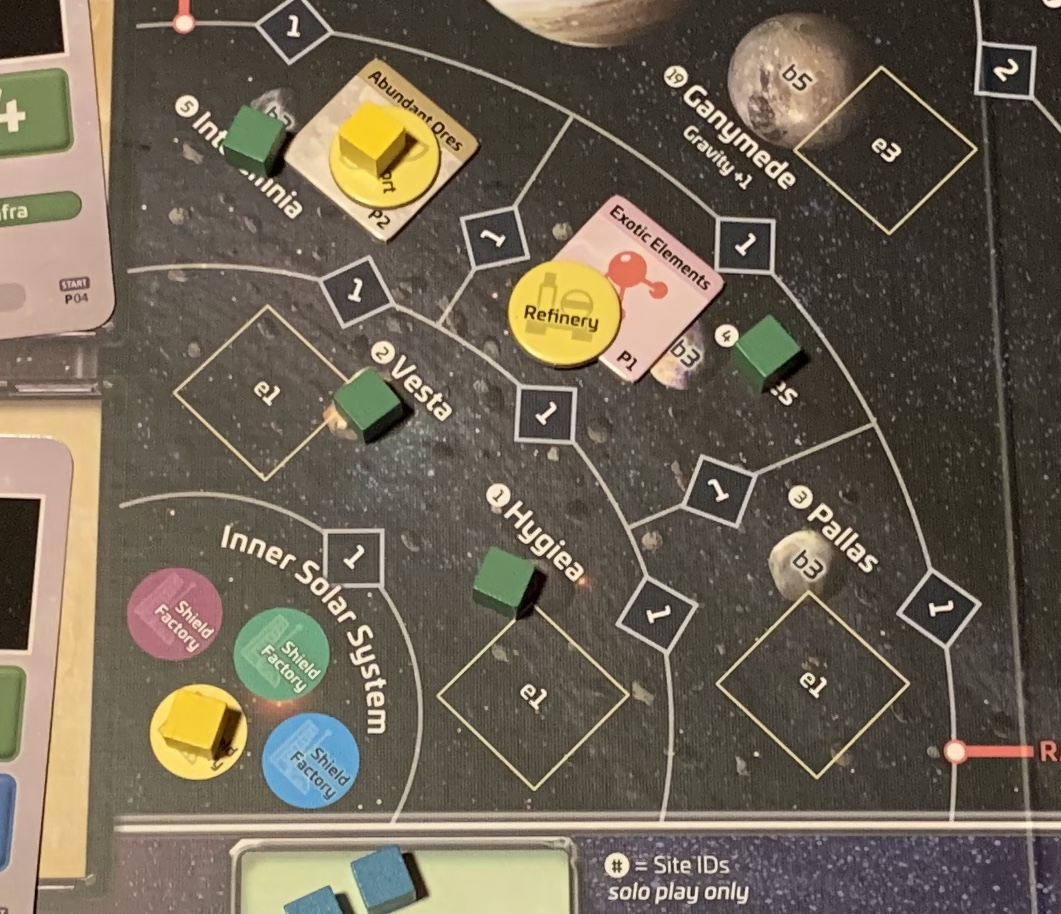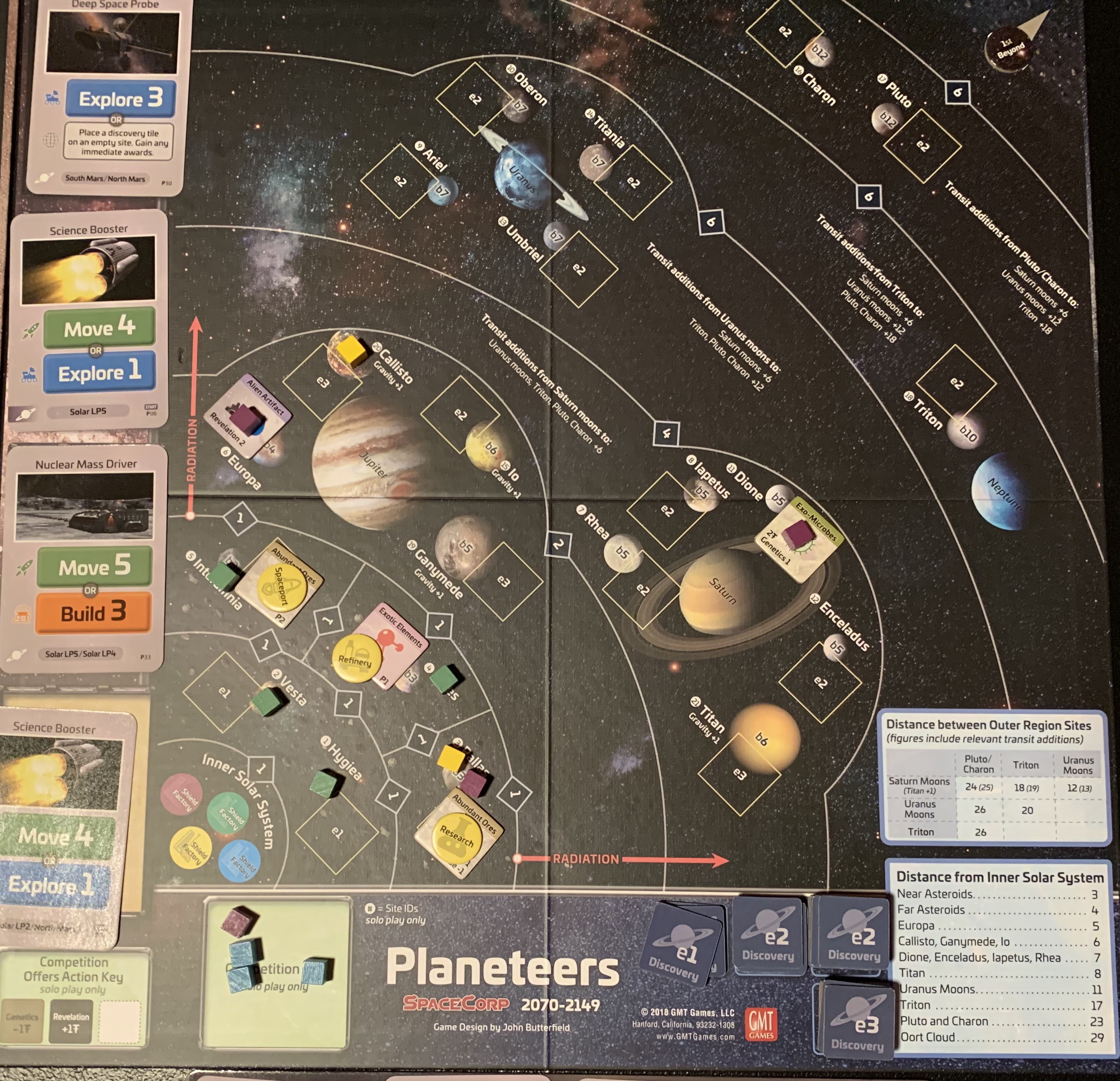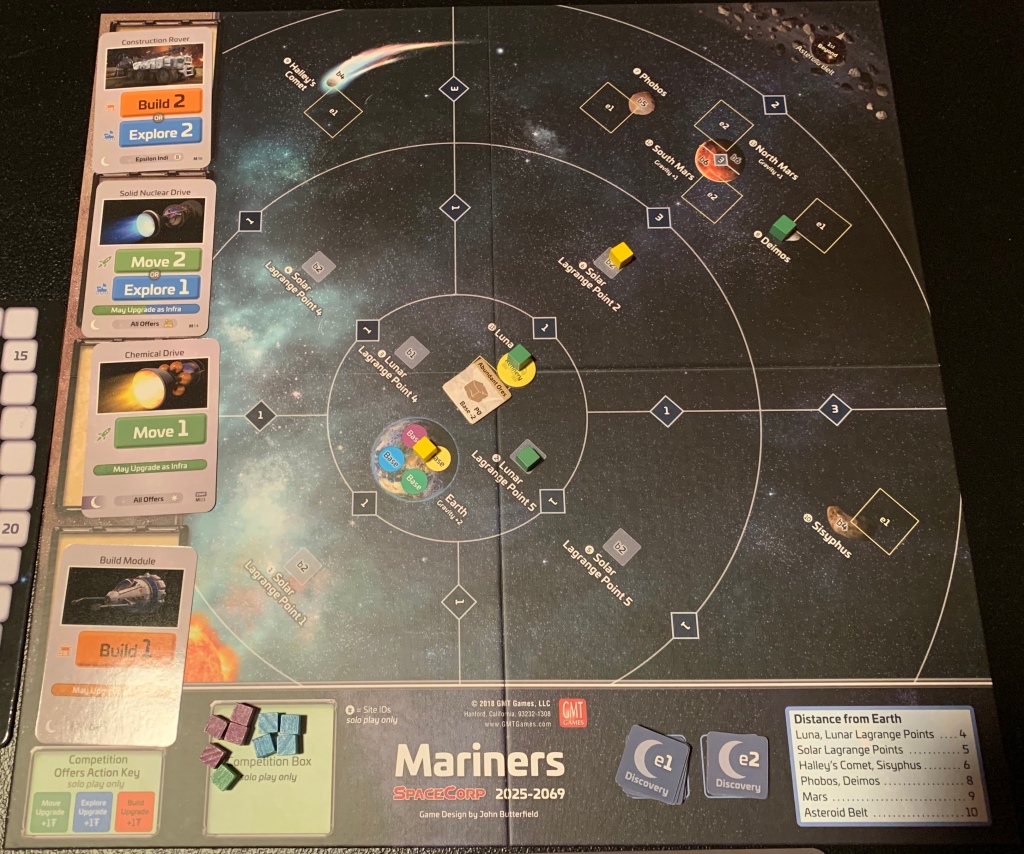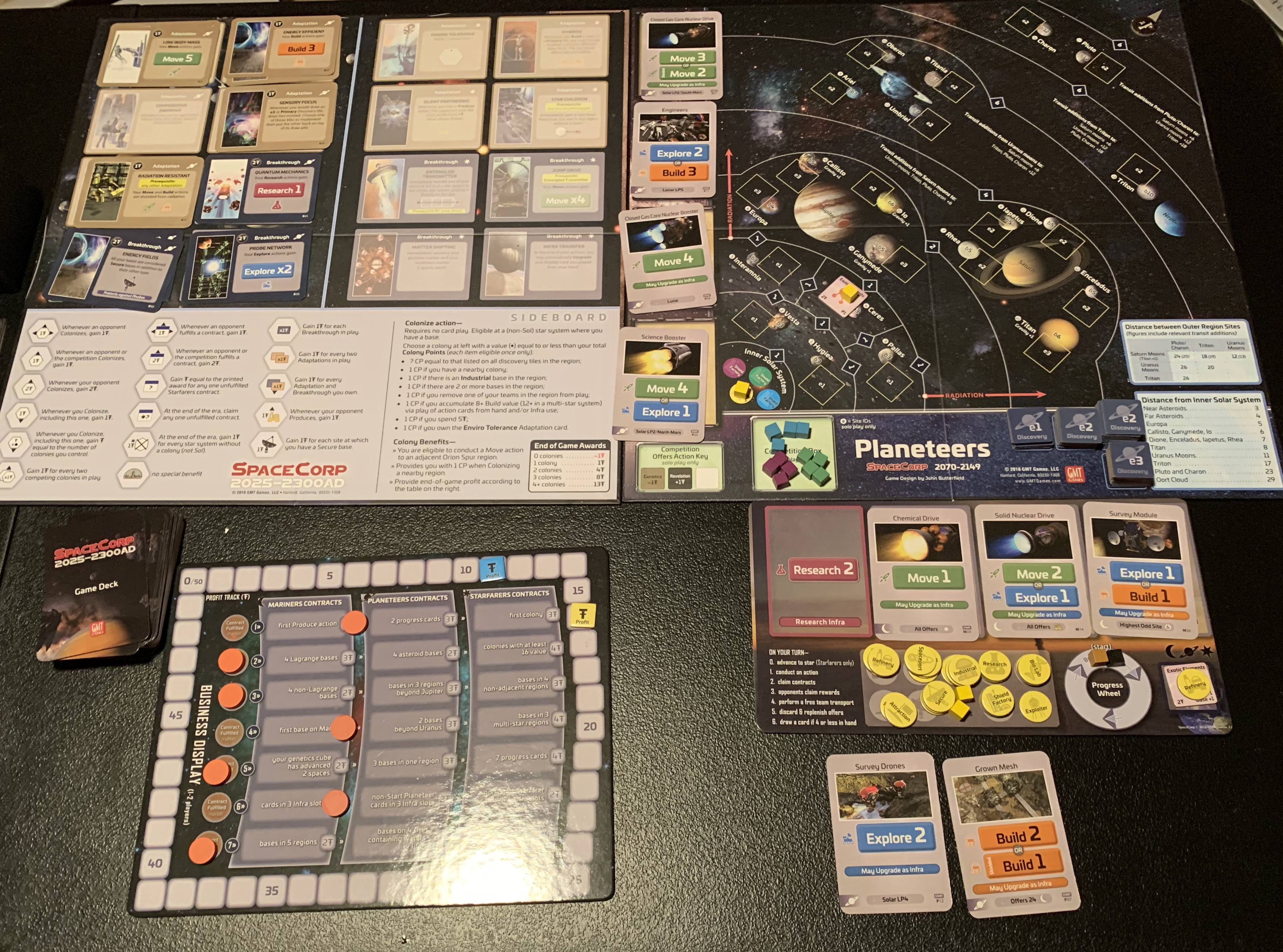
Turn Five, August 16-18
The first chit drawn on turn five was a Turn End chit. Two more of those, and it will be a great turn for the Entente. The next chit activated the BEF, which attacked the First Army in Ghent. Because the BEF is all stacked together, it gets +1 to its die rolls. (The rules do not have a note on this, but I assume it is because the British units were all part of a standing army, while the other powers have conscripts and reservists mixed in with their professional soldiers).

The British have 2 units attacking at 4 (rolling 6, 3; 2 hits with the BEF bonus) and 1 unit attacking at 5 (rolling a 2; zero hits). The German First Army fires back with 4 units at 4 (4, 2, 1, 1; 1 hit), 2 units at 5 (4, 1; 0 hits); and 2 units at 6 (1, 1; 0 hits). The BEF manages to push back the numerically superior First Army, reducing IV Corps (4 -> 5) and III Reserve Corps (5 -> 6). The British reduced their II Corps (4 -> 5). The German First Army retreated to Mechelen, and has been pushed out of the victory line.
The next chit was the entente forced march, followed by the Big Bertha chit.
The fifth chit activated the Fourth German Army, which took its six strongest units (VI, VIII, and XVII Corps, all strength 4, as well as VIII Reserve, XVII Reserve, and the Cavalry Corps, all strength five) and marched into Namur to attack the Fort, along with their siege artillery (Big Bertha event). The German strength 4 units inflicted 1 hit (rolling 5, 3, 1), and the German strength 5 units inflicted 3 hits (rolling 6, 6, 5). This is a disastrous result for the French and Belgians, as it will eliminate the fort and the two French units there. The Fort and the French units roll 4 dice at strength 5, but inflict no hits rolling (4, 3, 2, 1). The Fort is destroyed with no German losses. The French Fifth Army, sitting in Charleroi, watches in horror as the Germans seize the fort and prepare to turn towards France.
Chit six was the German forced march, followed by the second Turn End and the Zepplins event. The ninth chit activated the German Third Army, which moved form Namur to Tienen. The tenth chit activated the German First Army, which used the forced march event to move to Louvain.
The eleventh chit activates the German First Army, which launches a counterattack against the British in Ghent, using Zepplins to boos their firepower. The Germans attacked with 3 units at 4 (rolling 6, 5, 5; 3 hits), 2 units at 5 (rolling 6, 3; 1 hit), and 3 units at 6 (rolling 4, 3, 3; 0 hits). The BEF defends with 1 unit at 4 (rolling a 2), and 2 units at 5 (rolling 6, 1; 1 hit). The British are eliminated, but they manage to reduce the German III Corps (4 -> 5). The Germans have now moved back across the victory line, and appear unstoppable.
The twelfth chit activates the Belgian army, which places itself between the German First and Second armies in Mechelen, hoping that it can work with the French Fifth Army to force the German First Army to take a damaging multi-space retreat.
There are four chits left in the cup: French Fourth Army (eliminated), French Fifth Army, Sabotage, and Turn End. If the Entente can pull French Fifth Army before the turn end chit comes up, they have a chance. Unfortunately, the chits came up French Fourth Army, Sabotage, Turn End, leaving the French Fifth Army inactive in Charleroi.

Turn Six, August 19-21
Turn six is the first opportunity for the Germans to win. If they manage to hold a space past the victory line, they will win the game.
The first chit activates the much-reduced German Third Army, which attacks the Belgian army at Mechelen. The Germans have 2 units attacking at 5 (rolling a 6, 1; 1 hit), and the Belgians have 1 unit defending at 5 (rolling a 5; 1 hit). The German XIX Corps is eliminated, and the Cavalry are forced to retreat to Louvain. The Belgian Fifth Division is reduced (5 -> 6).
The second chit activates the German First Army. Because there are only two possible activations for the Entente (the French Fifth and the Belgian Army), the First Army can position a blocking force in Ath and essentially guarantee a victory. The Germans move two units of 5 strength infantry to Ath, and keep the rest of their forces in Ghent. The only sequence likely to produce an Entente victory is if the Entente draws forced march before the French Fifth Army activates, wins in Ghent with the Fifth Army, and then is able to force a retreat from Ath with the remnants of the Belgian Army.
Ultimately, that eventuality doesn’t come to pass. The French Fifth Army activates next, and moves to crush the Germans at Ath, doing 5 hits to the Germans 2. The German Fourth Army activates and slouches towards the victory line, but can’t quite get there (one movement point short). The next chit activates the Belgians, who launched a doomed attack on Ghent. They do not get any hits, and are eliminated by concentrated German fire.
Because neither the French nor the Belgians were able to dislodge the Germans from the Victory Line, the Germans win. The Belgians fought bravely, losing every non-Garde Civique unit in their army (1, 2, 3, 4, 5, and 6 divisions, 14th and 18th Brigades, and the Belgian cavalry) in their efforts to stop the Germans. The British fought bravely as well, with the BEF eliminated after striking a substantial blow against the Germans at Ghent. Only the French acquitted themselves poorly, with the Fifth Army frequently being too slow to act. Had the French marched on Namur from Charleroi, the war may have been different.
Concluding Thoughts
I enjoyed my playthrough of Brave Little Belgium. The chit pull engine that drives the game creates great moments of drama, even when playing solitaire. Although the basic action of the game is scripted–the Germans are going to invade Belgium every time, after all–the variety introduced by the sequence of chits means that you are likely to face a different tactical puzzle each time you play. Having only played once, I can’t speak to how many plays it would take for you to exhaust the interesting decisions in the game, but I imagine it is good for several plays.
If you have opponents, as opposed to just playin solitaire, Brave Little Belgium could shine as an introduction to wargames for a new player. The relative lack of complexity in the rules makes it easy to learn and teach, and the point-to-point movement system and simple movement point allocation makes it easy to see your available options at any given time.
I imagine that I will play this again soon, as I want to see if I can maneuver the Entente to hold out past August 27, or to force the Germans to take a fifth atrocity token.
